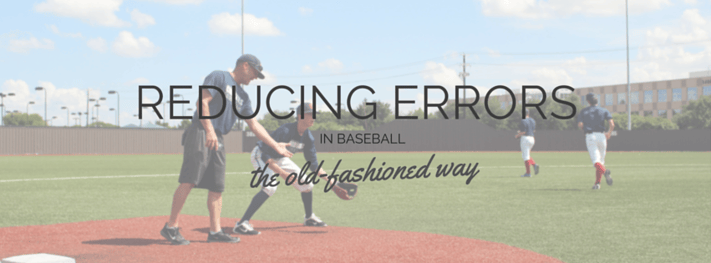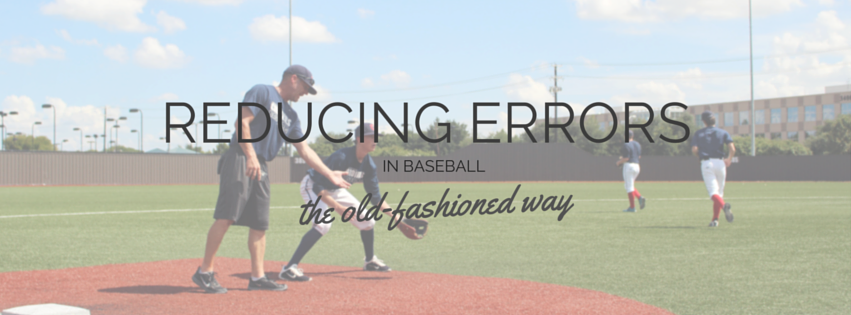
Looking to minimize the number of errors your baseball team makes? Let's face it: everyone in baseball is making efforts to minimize errors.
If you want your team to sharpen up around the bases let's talk about hard work, consistent reps, and efficiently making plays on every rep. This is what the game requires to get better. One could argue that the team making the fewest mistakes, wins the game.
Did you know that a baseball diamond only consists of the area between the 4 bases? 6 players defend 8,100 square feet between four 90 ft. baselines -- not to mention the skinned area that extends to the outfield grass. That's roughly more than 1,400 square feet to divvy up between each position. That's a hefty amount for any man.
From a territorial standpoint, it's really rather impressive what the game demands of baseball defenders.
Heck, Major League Baseball employs the greatest in the game and even the team with the least errors (LA Dodgers) tallied 75 errors for the 2015 season. Hat tip to the Dodgers. They weren't too bad, making it to this year's NLDS, with only one error in the post season.
See how the other 29 ball clubs performed this season: Team Errors 2015 MLB Regular Season.
Check out the Post Season stats to date as well.
So how do the Dodgers manage to average only 0.46 errors per game? Every coach knows that by getting more reps their infielders should become more comfortable making routine plays. So how do you do it? How can players avoid catching error-fever? Sorry, but that pun was too good to pass up.
Here's one way to answer the age-old baseball dilemma.
Goals of this drill:
- Focus on ground balls, back hands, and forehands
- Emphasize catching the ball, and recording the out
- Because these balls should all be well within a player's range, 100% execution is a realistic goal
- Work on different types of ground balls most common to each infielding position
- Give each player an upbeat, high tempo rep series
- Diversify players at 3B, SS, and 2B (excellent for young players who don't know their position yet)
Features:
- We recommend a minimum of 4 seconds between balls
- Players receive a high rep count during the drill
- Coach can pause the drill to explain fundamentals and make corrections and resume the drill seamlessly
- The timer horn may be incorporated to add an additional challenge for players
- For example, set the timer horn for 4.5 seconds and challenge players to make the out within that time. If they do, lower the time. This will simulate the pressure of a hitter trying to beat out the ground ball to first base.
Once again, REPETITION remains baseball student's go-to friend for reducing error. The more times you've seen a backhanded ground ball rapidly approaching, the more likely you'll identify the ball when game time rolls around, and you'll make the out.
Inevitably errors will happen, but thankfully this is a forgiving sport that rewards the players who get back up and make the play the next time that same ball comes their way.
SHARE this drill with your team, fellow coaches, and video your players executing this drill with finesse (and share it back with us)!
The 9-Ball Drill is just one way of reducing error.
What's your go-to drill to work out error-prone areas of the game?






Leave a Comment